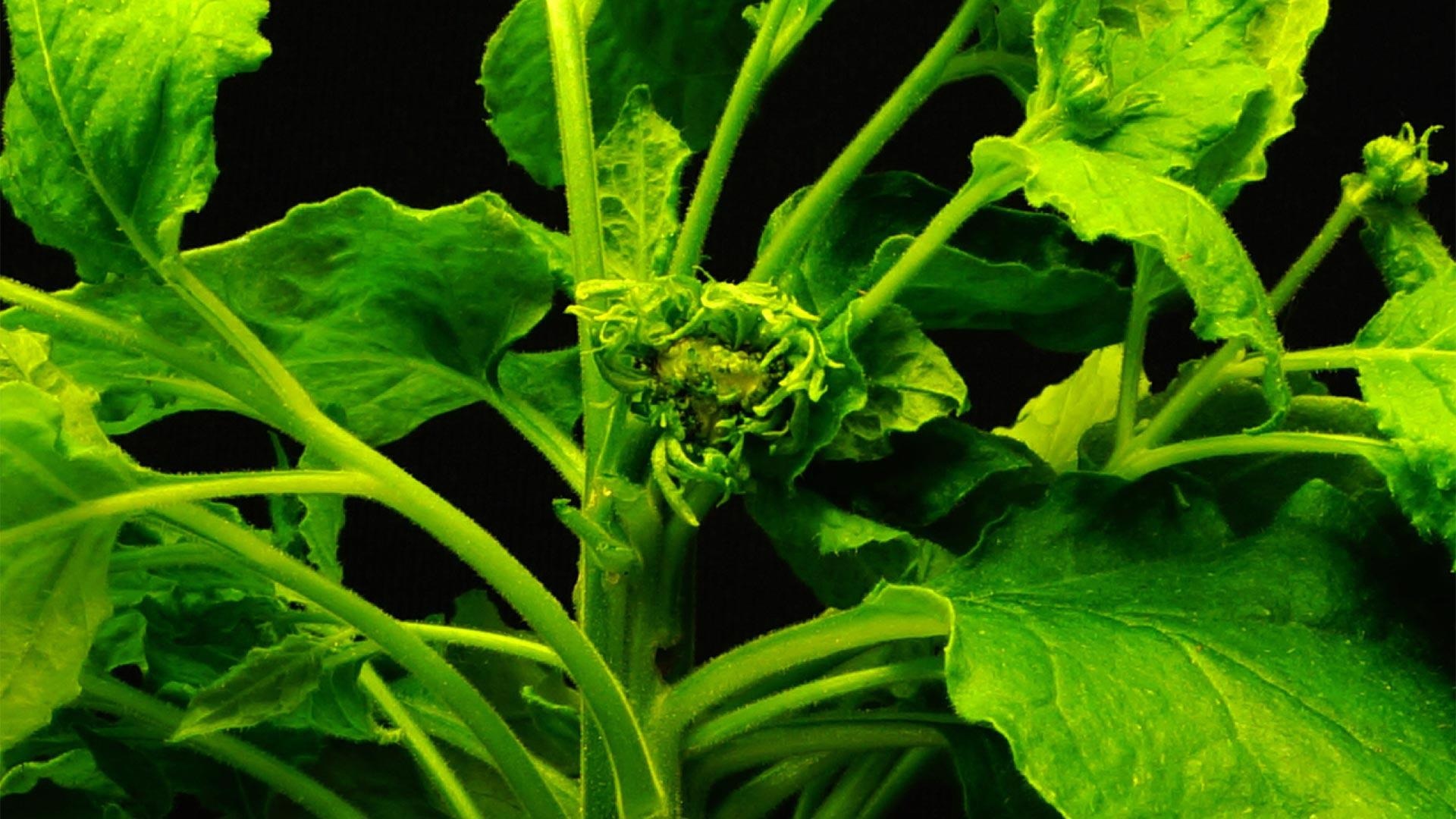When plant geneticists discover a gene that boosts crop yields, they want to see if they can replicate the effect in other crops. However, Zachary Lippman, a professor at Cold Spring Harbor Laboratory and an HHMI investigator, warns that understanding what a single gene accomplishes will not be enough. He discovered that knowing what other strongly linked genes might be hiding in the genome to prevent the desired change is beneficial.
 Tweaking one plant gene can increase desirable traits, but changing the same gene in another type of plant may not yield the same result. A tobacco plant with a mutation engineered in the clv3 gene makes larger and more numerous stems, branches, and flower tissues. CSHL researchers discovered the same mutation in evolutionarily-related plants produces different effects. Image Credit: Choon-Tak Kwon/Lippman lab
Tweaking one plant gene can increase desirable traits, but changing the same gene in another type of plant may not yield the same result. A tobacco plant with a mutation engineered in the clv3 gene makes larger and more numerous stems, branches, and flower tissues. CSHL researchers discovered the same mutation in evolutionarily-related plants produces different effects. Image Credit: Choon-Tak Kwon/Lippman lab
Lippman, former postdoc Cao Xu (currently at the Chinese Academy of Sciences in Beijing), and colleagues show how duplicated genes in plant genomes hamper crop development plans. Plants have a lot of gene duplications. Many of these actions serve as “backup copies” of the original gene. The study was published in Nature Plants.
However, Lippman claims that having a good candidate for gene editing would not be enough to determine the outcome of planned modifications, based on his team’s astounding discoveries.
The lack of predictability in the context of a duplicate gene really needs to be an eye-opener for designing crop improvements.”
Zachary Lippman, Professor and HHMI Investigator, Cold Spring Harbor Laboratory
The researchers looked at the clv3 gene. This gene creates a protein that prevents developing plant tissues from growing too large. Many domestic plants have increased yields as a result of clv3 mutations. Mutations in the clv3 gene, for example, are linked to larger fruits with more seed sections in tomatoes.
In tomato, tobacco, ground cherry, and petunia plants, Lippman’s team inserted identical mutations into the clv3 gene. The Solanaceae family, usually known as nightshades, includes all four plants. Lippman and his colleagues were expecting similar results, but what he discovered was surprising.
The impacts were striking in tobacco, with certain growth zones doubling in size. The plant’s loss of the clv3 backup gene caused this alteration. Since the duplicated gene partially cushions clv3 mutations in tomatoes, the impacts were milder. Mutating clv3 in in-ground cherry and petunia showed no effect. Both plants possessed clv3-like genes, which compensated for the clv3 gene modifications introduced by the researchers.
The lesson, according to Lippman, is that improving crops by genome editing may necessitate a list of duplicated genes. Crop developers must know how essential genes have been replicated, eliminated, and modified throughout time. Scientists will be able to design more predictable agricultural advances as a result of this.
Source:
Journal reference:
Kwon, C-T., et al. (2022) Dynamic evolution of small signaling peptide compensation in plant stem cell control. Nature Plants. doi.org/10.1038/s41477-022-01118-w.